Note: this method also works for pothos and other vine-type plants. Even larger aroids and monstera deliciosa can be propagated this way.
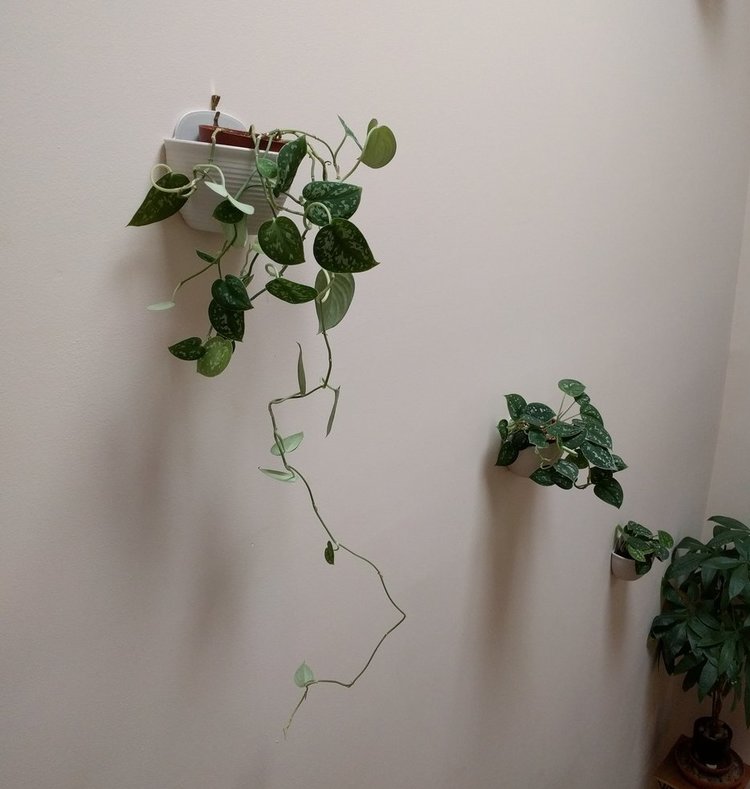
Problem: the original Scindapsus pictus plant is looking quite bare near the pot but still has several healthy vines – this is completely a matter of opinion, if you like the way your plant looks, then no need to change it.
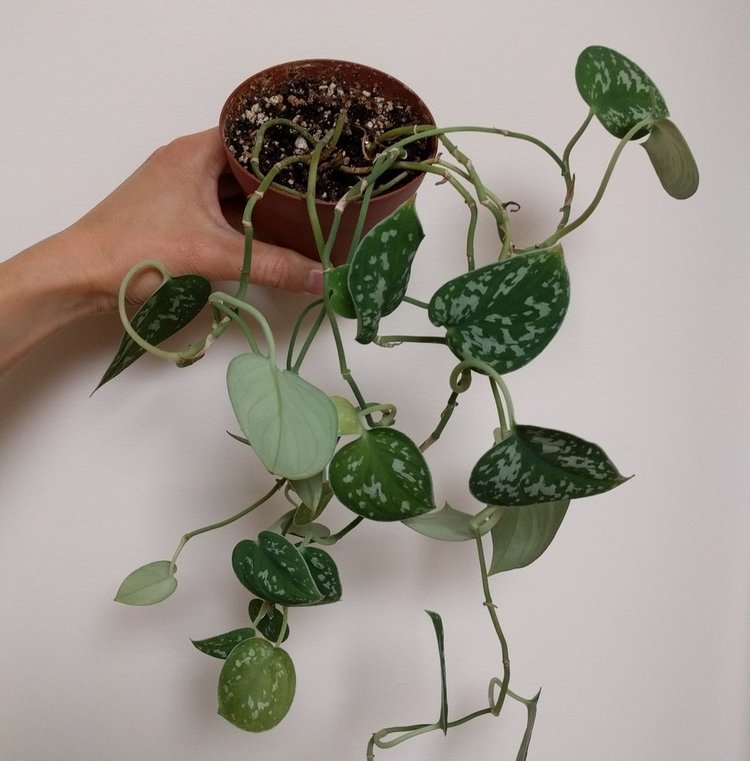
Solution: salvage as many healthy leaves and start a new plant.
Concept: a cutting of the original plant (in this case, a stem) develops new roots. In time, a new vine will emerge as well. The “new” plant is genetically identical to the original, a clone. Other types of propagation are root division, leaf cutting, and seed.
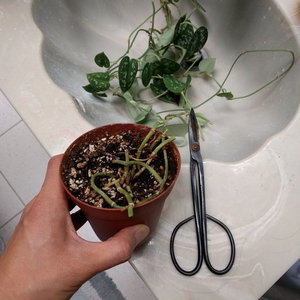
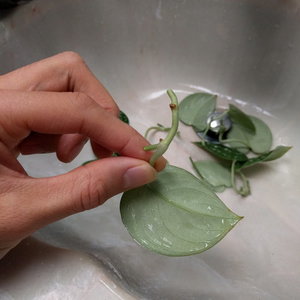
Method: if your original plant looks nice near the pot, then you need only to prune a few vines. In this case, I want to re-start the entire plant so I’m going to cut the vines back all the way to the soil.
Selection: in order for these cuttings to root, you must include a section of the main vine. I’ve even seen it work without a leaf! I cut the main vine into short sections that comprise of a leaf, a petiole (the stalk that attaches directly to the leaf), and a section of the main vine (this is technically called the “stem”). While the cuttings are in my sink, I gave them a quick rinse.
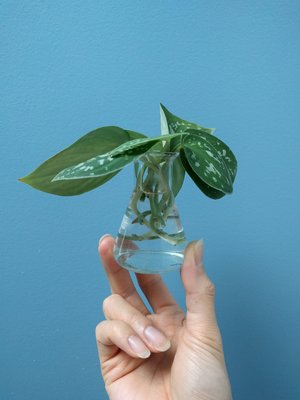
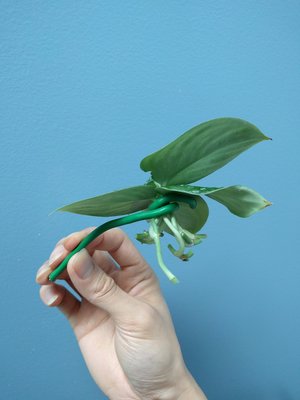
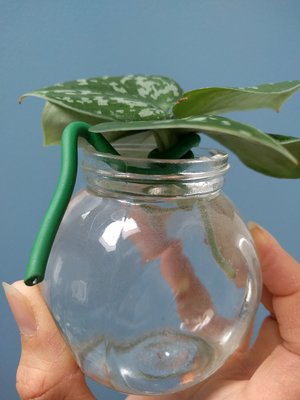
Rooting: a cute little laboratory flask is helpful because the narrow opening naturally keeps the cuttings bundled together and submerged. Else, I find these soft rubber ties very helpful in keeping the cuttings together and securing them to the lip of whatever rooting container you’re using. You basically want their cut ends to stay submerged in the water.
Note: there are many ways to root a plant – I’ve chosen to root in water here but you can do it in perlite, sphagnum moss, or directly into soil. The goal is just to keep the area around the node moist (the section of the vine where the new roots will grow).
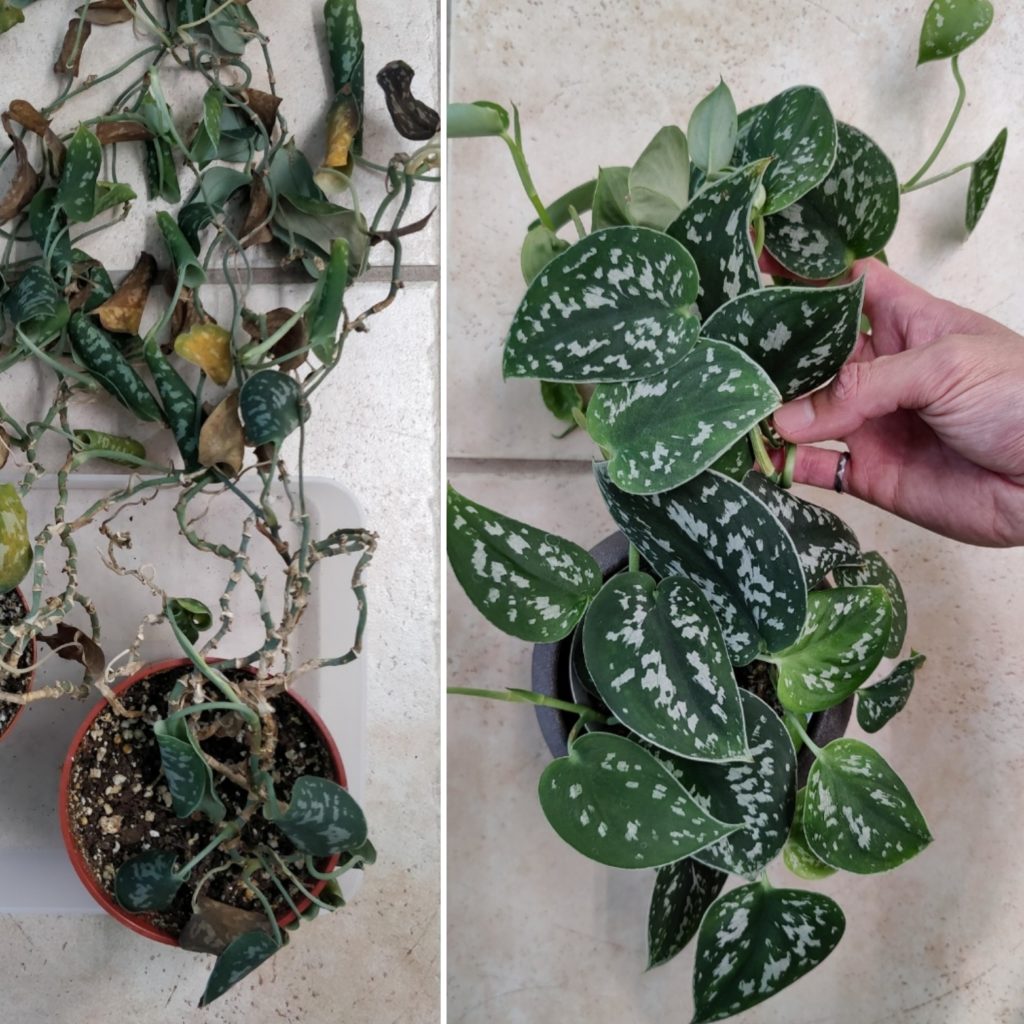
Other considerations/FAQ:
- How long does it take to root? One can never say for sure. Just make sure the cuttings are getting some indirect light (no direct sun) and be patient
- At what point should I transplant (if at all)? Once you see at least a half inch of root emerge, you can transplant to soil. Some people say you don’t even need to root them in water but I sort of prefer having a few cuttings in glass peppered around my growing areas. If you want to keep it growing in water indefinitely, that’s also possible!
- Do I need to replace the water? I typically just pour in some fresh water when I see the level has decreased after a week or two. I haven’t had issues with algae or other stuff growing but definitely replace the water if it’s looking murky.
- Don’t roots grow better in the dark? Yes, so I’ve been told but I like to see them emerge so I like using clear glass
- How do I transplant to soil? I’ve been most successful with planting 6-7 rooted philodendron/pothos cuttings into a 4″ plastic nursery pot, using regular potting soil with some added perlite. I’ve had problems with more cuttings in a larger pot – I think the roots just never established themselves
- How do I care for a newly transplanted cutting? Even though your cutting has roots, they aren’t yet fully established for moisture uptake in soil (yes, water-only roots are different from soil roots). Thus, you need to fully saturate the soil AND put the plant where it will get bright indirect light (at least 200 FC). It’s very important that you do both! If you only soak the soil without giving enough light, then there won’t be much photosynthesis action and the lingering moisture will be used by opportunistic mold/bacteria, potentially causing rot.
Hope you found this helpful! Do you want to learn my approach to houseplant care that’s both scientifically sound and gives you realistic expectations? Cut through endless tips/tricks that may or may not work and get a solid foundation in how this all works:
Online course – Essentials of Houseplant Enjoyment

